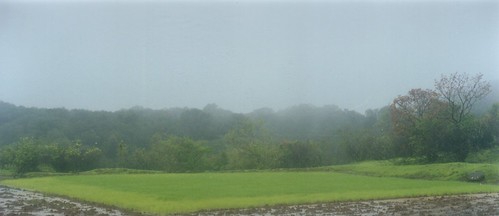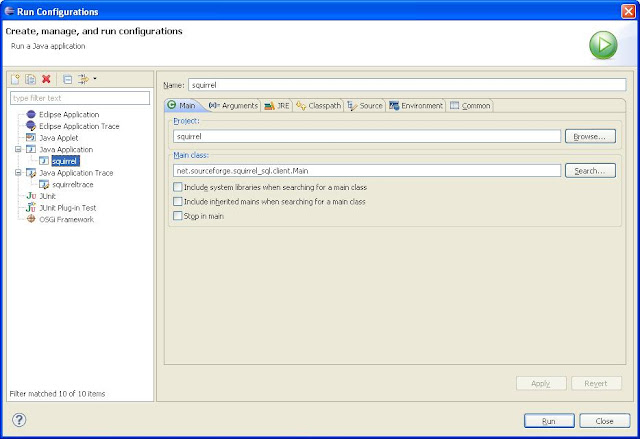Why is it important? What’s the big deal? How does it change the way we do work and think? And why is it so important to India?
Let me start off by recounting a personal tale...
 [Photo Credit: Vijayendra Vaidya - A Rice Field during the monsoon season in Maharashtra]
[Photo Credit: Vijayendra Vaidya - A Rice Field during the monsoon season in Maharashtra]I generally travel to Mumbai for my weekends. The train journey takes about 3 to 3.5 hours and descends from the mountains – where Pune is situated - onto the island of Mumbai. Being a regular commuter, it has been a while since I looked out at the scenic beauty of the ghats as the train descends onto the plains. I spend my time reading books I would have loved to read during my weekdays. Very recently, I subscribed to the GPRS service provided by Airtel (A cellular provider in India) at a very reasonable subscription of INR248 per month (~6 USD per month) for unlimited uploads and downloads. (With roaming in India) And at what speeds, you ask? Decent speeds of 40-50K/sec – good enough to listen to crystal clear online radio at
VirginRADIO I have a smartphone which runs on Windows - the
SPV E200. The neat thing about the hardware is that it is powerful enough as desktop computers of a few years ago. (133 Mhz, 32 MB RAM, 64MB ROM, Pentium V generation Anyone?)
And it runs on familiar Windows software. Imagine! What does that mean to you as an end-user? It means that you would have a huge pool of utility programs you can download off the web and then install them on the phone via the data cable. [As an aside, the Windows phone kit comes with all relevant accessories which help you communicate with your PC. Unlike some major brands wherein you need to buy the data cable separately].
As a software developer, you are going to be using the same tools (Visual Studio), same APIs (Win32, .NET etc) with some limitations/enhancements to cater to the mobile platform. This is where it starts getting interesting for the development community at large. It means that – in one shot - you have innumerable developers who suddenly realize that they can leverage their skills to develop for this new platform. What this translates to is a rapid migration as well as development of applications for this new platform.
Even today, with the proliferation of applications – some free, some shareware and others you need to pay for – you can convert your phone into a very useful device so that your time on the move can be spent productively. And, you know what? You can completely avoid the costs of downloading applications via air and save yourself a tidy fortune. I’m going to list a set of applications which I find highly useful to augment the capabilities of the phone.
Email - On the Move:An IMAP/POP client is provided with the phone – with SSL support. So you can pop your mails from
gmail for example. The email software also gives the capability to download email headers. If you like to read the complete mail, you need to download the mail - which is a seamless process. This in itself should be very exciting for business users within India. Combine this with an email payment system like
PayPal and the possibilities are enormous for service sectors.
Entertainment:Movie Player – BetaPlayer - for example - can be used for playing movies. How do you get full-length movies on the phone’s limited memory? Buy a 1GB SD Card for around ~70$, use
pocketdivxencoder to encode your movies to the phone factor and you should be done! Ditto for TV Recordings made with your PVR. In the future, with falling prices, I expect SD Cards to become another distribution media for movies. And a very popular one at that!
Internet Radio – In spite of the SPV not having radio tuning capability, listening to internet radio using the headphones is indeed a very enjoyable way to spend time! And Yes, the streaming happens in the background, so you can yet run your PDA applications and be productive. During my trip to Mumbai, except for a few sectors when the train passed through tunnels, the connection was excellent and I had a marvelous time listening to VirginRADIO. One Crib though; bbc.co.uk/radio has a huge and excellent collection of radio shows in various categories. However, they can be played only on RealPlayer. And yes, there is no port of RealPlayer for the SmartPhone. Yet! ShoutCast would be another place to listen to music. Though, I have not tried it personally, PocketMusic apparently allows you to listen to ShoutCast streams, so that should be fairly exciting as well.
MP3 Player – Either Windows Media Player or PocketMusic. Store your favorite songs on an additional SD card. Also upcoming Windows Phones have the capability to appear as a storage disk when you plug them to your computer. What’s the big deal? No need to install ActiveSync. Just dock the mobile in a USB port and it doubles up as a storage device.
Feed Clients - Clients which suck data from content sources such as SmartFeed (A PodCast client used to listen to/synch up with Podcasts. You would necessarily need an add-on Flash Card to store the podcasts)
Mobile Blogging - Having a camera phone - combined with the fact that you can send regular emails - is a good thing; Now you can upload pictures with a brief description - if not full text - in your blog from the field itself!
Games – Though not a gaming enthusiast, some must-haves in the free category include Pacman, Cell Doom and Chess
And these are just a sampling of interesting things you can do with your phone. Apart from this, you can browse the web with IE. Also you can use it as a regular modem, connect it to your PC or laptop to browse the web at better than dial-up speeds. You have neat integration with
Jeyo Mobile Companion, which creates a SMS folder within Outlook and allows you to read and send SMSes from your desktop. As an aside you can even forward your regular email messages as SMSes!
The more I look around, the more I see innovative applications exploiting mobile scenarios. In my mind, the mobile platform is currently going through the same phase as the PC world in the Win 3.1 days. And it is definitely going to be the next platform for development.
NTT DoCoMo has done really interesting stuff by having a marriage of barcode readers and a camera phones to completely change the way we will interact with society.
And for India?And for India, this can represent a tremendous leap in the amount of information available to people, services and has the potential to change the structure of relationships. Why? Firstly, many Indians will probably buy a cell phone before they buy a full-fledged computer. The price-point is attractive. An E200 will set you back by around ~INR 12,000 (~300USD) and a unlimited GPRS pipe will set you back by INR 248 (~6USD) per month. To put things in perspective, a high-end Nokia phone would set you back by around INR 20,000 (~450USD) and will not have the same deep integration with a variety of software and services. And the capability of customizing your phone to your needs is limited and expensive; mainly because software is secondary for Nokia - at least till now. In India, people pay INR 15-30 (~75cents) for downloading music fragments in the form of ring tones, but may not shell out the same amount for buying music CDs and tapes! Now, with cheap internet access via GPRS and a phone which allows for tremendous customization via software, the possibilities are endless. Think banking services, payments, entertainment. If it kicks in, And it will! it will change relationships as we see it today. As
Thomas Friedman points out in his book - "
The World is Flat", in the first generation of globalization, you went and bought your ticket from a travel agent, in the second generation, the ticket counter was replaced by a computer and in the 3rd generation, you buy your own ticket!
And the beneficiary is the common man. And the elimination of the middle man who feeds on lack of information. Knowledge truly sets one free!





















